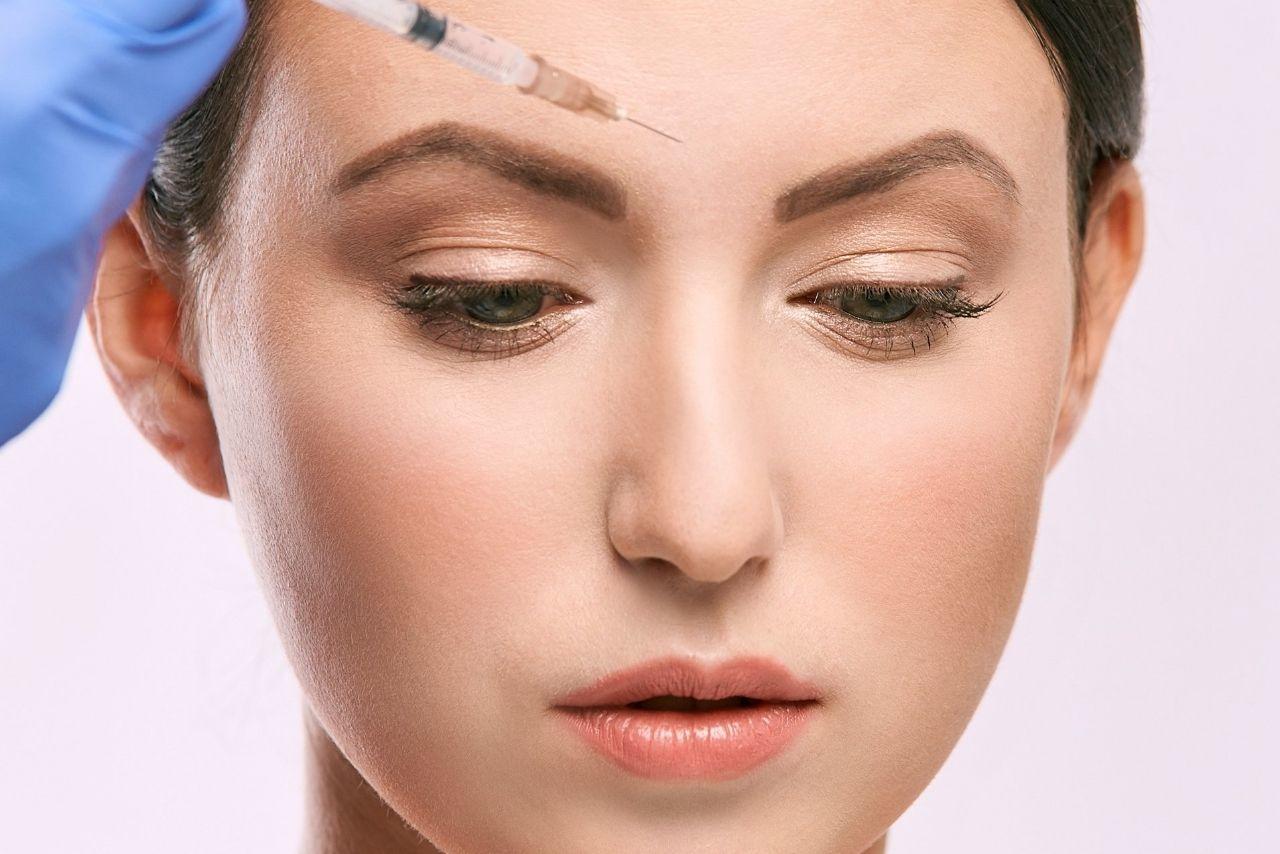
Injectable dermal filler treatments have become incredibly popular as they have the ability to treat symptoms of facial aging without the pain and necessary recovery time of cosmetic surgery. Injectables, however, do sometimes come with one negative side effect: swelling or bruising around the injection site. Fortunately, most post-treatment bruising is minor and resolves itself with no intervention within a day or two. And even better, there are also simple things patients can do to decrease the intensity of bruising.
Learn what causes bruises and swelling, and how to prevent or minimize by following a few simple tips. Also, this article helps patients understand when bruises are a sign they should contact their doctor for advice. View all high-quality Dermal Filler supplies.
WHY CAN BRUISING OCCUR AFTER DERMAL FILLERS?
Bruising doesn’t always occur after dermal filler treatment, but any time an injection is made under the skin, bruising is possible. Black, purple or red bruises can form when damaged blood vessels leak blood into the surrounding tissue. This can occur if a blood vessel is accidentally nicked by a needle, or if the skin is pinched or pulled, causing capillary damage.
While a skilled injector can take steps to minimize bruising, there is simply no way to guarantee bruising will not occur post-injection. Some people bruise more than others, especially in areas of skin that lack collagen, a structural protein that supports blood vessels and protects them from injury.
WHO IS MOST LIKELY TO BRUISE AFTER DERMAL FILLERS?
Certainly, genetics play a role in the likelihood of bruising. Also, women are more likely to bruise than men, and older people are more likely to bruise than those who are younger. In addition, the following factors may increase your risk of bruising:
- Use of blood thinners, including aspirin and NSAIDs
- Frequent alcohol consumption, which increases blood flow
- Exercising immediately before or after treatment
- Systemic inflammation due to poor diet or poor health
Experienced injectors take care to reduce blood vessel damage, but even small needles can’t completely eliminate the risk.
HOW LONG DOES BRUISING LAST AFTER INJECTABLES?
Bruising can appear immediately after dermal filler injections, or 1-2 days later. In either case, the bruising usually resolves itself after a few days. However, in some cases, bruises may last up to one week.
Bruises generally begin as dark red or purple, then may turn yellow, before disappearing completely. However, it’s important to understand that one patient’s experience can differ from other patients as everyone heals at their own pace.
Most bruising that results from a dermal filler treatment can be easily covered up / hidden with simple makeup concealer.
BRUISING PREVENTION: BEFORE YOUR TREATMENT
Planning ahead can decrease the chances of post-injection bruising. Here are some simple ways to minimize any bruising after a filler treatment:
Choose the right injector
As with any professional cosmetic treatment, choosing the right doctor or injector is critical. An expert injector will have many years of experience using a multitude of injectables. This experience will help them to develop a sound and refined injection technique that can minimize post-treatment bruising.
Avoid blood thinning medications and supplements
Most injectors will advise their patients to stop taking any medication or supplements that cause thinning of the blood, or restrict the blood’s natural ability to properly clot – these are two key factors that can increase the likelihood of bruising. Of course, patients with pre-existing medical conditions that require the use of anticoagulants should always discuss upcoming injectable treatments with their doctor before undergoing treatment.
With respect to medications and supplements, to prevent bruising, patients should discontinue using the following:
- NSAIDs including Aspirin, Ibuprofen, and Naproxen
- Anticoagulants such as Heparin or Warfarin
- St John’s Wort
- Vitamin E
- Fish Oil/Omega-3 fatty acids
- Gingko Biloba
- Ginseng
- Green tea
- Krill oil
- Flaxseed oils
BRUISING PREVENTION: AFTER YOUR TREATMENT
Take Arnica Montana Supplements
After dermal filler treatment, patients can consider taking Arnica Montana, a natural remedy with the power to reduce post-procedure pain and treat bruising. Arnica Montana can either be taken in pill form or applied topically to the treatment area. Some injectors might even recommend taking the supplement a few days before injectable treatment to further prevent bruising.
Eat Pineapple
There’s some evidence that enzymes found in highly-citrus fruits – like pineapples – can work to prevent bruising. Patients can try eating pineapple during the first two days after filler treatment.
Avoid Excess Physical Activity
Intense exercise increases heart rate and blood flow, which in turn increases the risk of bruising. Patients should avoid any form of strenuous physical activity, including weight training and aerobic exercises, for 2-3 days following dermal filler treatment. Rigorous activity can increase heart rate and blood flow, which prevents damaged capillaries at the injection site from quickly healing.
Elevated Sleeping
Patients should avoid sleeping for at least 3-4 hours following treatment in order to avoid any inadvertent rubbing or pressing on the treatment area. On the first night following treatment, it’s a good idea for patients to sleep with their head elevated by propping it up with extra pillow(s).
Avoid Touching
Patients should endeavor not to touch the treatment area for at least the first 6 hours after the injection. Specifically, patients should avoid putting any strong or moderate pressure on the injection area as that can cause added trauma to the blood vessels. Importantly, patients should never massage the treated area unless specifically instructed to do so.
Cold Compress
The intermittent use of a cold compress or cold packs during the first 8 hours post-treatment can help reduce bruising or swelling in the injection area. The compress can be gently applied for 5-10 minutes every hour.
Avoid Alcohol
Alcohol relaxes and expands blood vessels, increasing blood flow and therefore the risk of bruising. Even small amounts of alcohol can trigger this effect. For best results, patients should avoid alcohol completely 1-2 days before and after filler injections.
Take Vitamin C Supplements
Vitamin C deficiency may also increase the likelihood of bruising after injectables. Adding daily vitamin C supplements or eating foods high in Vitamin C, such as citrus, strawberries, kale or broccoli can reduce bruising.
CAN BRUISING A SIGN OF SOMETHING WORSE?
Remember that bruising is a completely normal side effect of injectable cosmetic treatments. But in rare cases, bruises are a sign that something’s wrong. If any of the following occurs, patients should contact their doctor immediately:
- If the bruise is getting darker or larger over time
- If a bruise fails to heal completely after 2 weeks
- If the bruises are accompanied by severe pain

About the Author: Doris Dickson is a specialist writer for Health Supplies Plus, focusing on the aesthetic medicine industry. She diligently researches cosmetic treatments and products to provide clear, concise information relevant to licensed medical professionals. Her work supports Health Supplies Plus’s commitment to being a reliable informational resource and trusted supplier for the aesthetic community.
Disclaimer: The content provided in this article is intended for informational purposes only and is directed towards licensed medical professionals. It is not intended to be a substitute for professional medical advice, diagnosis, or treatment, nor does it constitute an endorsement of any specific product or technique. Practitioners must rely on their own professional judgment, clinical experience, and knowledge of patient needs, and should always consult the full product prescribing information and relevant clinical guidelines before use. Health Supplies Plus does not provide medical advice.

